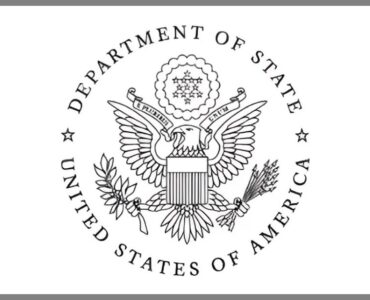Turkmenistan operates on a two-tier banking system, with the State Central Bank as the primary tier and commercial banks as the secondary tier. As the dominant financial institution in the nation, the Central Bank was founded in 1991 and is entrusted with overseeing the country’s banking system and supervising its national monetary policies. Its operations are governed by the Law of Turkmenistan “On the Central Bank of Turkmenistan” which was enacted on March 25, 2011 (updated in 2023), along with other relevant legal documents.
The Central Bank of Turkmenistan is responsible for maintaining price stability and low inflation rate in the country. The Central Bank also:
- Sets the official exchange rates of foreign currencies in relation to the national currency;
- Holds the exclusive right to issue and circulate the national banknote and currency;
- Ensures the storage and maintenance of Turkmenistan’s foreign reserves;
- Grants or revokes licenses for banking activities and supervises the banking sector to ensure overall stability within the banking system;
- Manages interest rates in the banking system. Currently, the interest rate is set at 5%.
Is the Central Bank independent?
In developed economies Central Banks tend to be independent from political influence and interference. Independent central banks are better able to maintain low inflation rates. When governments have direct control over central banks, politicians can use monetary policies in their favor. For example, they can use interest rates to create short-term economic growth or use central bank money to finance popular policies. However, such behavior would seriously harm the economy in the long term. Independent central banks can ensure a healthy and stable economy.
Article 3 of the law on Central Bank stipulates that the Central Bank reports to the President of Turkmenistan, who also appoints and dismisses its chairman. Currently, Toyly Malikov serves as the Chairman, having been appointed by the President in April 2022. To this day, Mr. Malikov has not conducted any public interviews.
Article 19 of the law stipulates that the Central Bank operates independently from the local executive bodies and bears no responsibility for the state’s obligations. Nevertheless, concerns arise about its independence due to the President’s sole authority to appoint and remove the head of the Central Bank without parliamentary approval. Based on published articles by the IMF and the World Bank, Central banks are more effective in achieving goals such as controlling inflation and ensuring financial stability when they can make decisions based on economic fundamentals without facing undue political influence.
What is the role of the Central Bank in creating the dual exchange rate regime in Turkmenistan?
Amid declining prices of oil and gas in international markets in 2014-15, Turkmenistan’s revenue from hydrocarbon exports had noticeably declined, causing the manat to depreciate. Instead of tackling the deflationary pressures, the Central Bank of Turkmenistan has significantly curtailed the exchange of foreign currencies since January 2016, which resulted in the emergence of a dual exchange rate. While the official USD/manat exchange rate is fixed at 3.5 manat, the black-market exchange rate is valued at 19.5 manat as of this publishing, reflecting a substantial difference of more than 450%. As a government entity, the Central Bank is failing in its mandate to ensure the stability of the national currency.
As a result of higher exchange rates in the black market, the inflation has skyrocketed in the country reaching double and triple digits between 2016-2021. The main goal of a Central Bank is to maintain price stability, which means low and stable inflation. Central banks in many countries set explicit inflation targets. However, the Central Bank of Turkmenistan does not set an inflation target. It refrains from acknowledging the presence of high inflation rate in the country and it does not disclose inflation-related data to the public. Every year the government increases salaries for state employees, pensions, stipends by 10% while the real inflation rate has been much higher between 2016-2021. This diminishes Turkmen people’s ability to afford goods and services, particularly imported goods. The high inflation reduces Turkmen manat’s buying power and weakens it against other currencies.
What do international organizations say about the Central Bank’s monetary policy in Turkmenistan?
IMF staff, in their official visit to Turkmenistan in 2019, concluded that significant overvaluation
and limiting availability of foreign currencies limits private investment and competitiveness of non-hydrocarbon exports. They added that achieving sustainable economic growth requires convertibility of the manat, acknowledging that its exchange has been severely restricted by the Central Bank of Turkmenistan.
Due to lack of reliable and quality data the World Bank is currently not publishing economic output, income, or growth data for Turkmenistan, and Turkmenistan is excluded from cross-country macroeconomic aggregates. EBRD, in its latest “Turkmenistan Diagnostics” (2019) report, mentions that weak export proceeds and ambitious government projects have resulted in a scarcity of foreign exchange and currency rationing by the central bank since 2016. It states that the manat is significantly overvalued and inflation has accelerated in the country. The report also adds that the government is responding by continuously introducing harsher currency restrictions, which severely disrupts trade activity. Currency restrictions cause businesses to struggle to pay for imports, receive payments for exports, and invest in foreign markets.
How does Turkmenistan’s monetary policy impact its prospects in joining the WTO?
Donate to support Turkmen analysts, researchers and writers to produce factual, constructive and progressive content in their efforts to educate the public of Turkmenistan.
SUPPORT OUR WORKAs part of the WTO accession process, countries often need to demonstrate their commitment to maintaining stable exchange rates and transparent monetary policies. Central banks play a crucial role in facilitating international trade by ensuring the availability of foreign exchange, which is necessary for importing and exporting goods and services. This helps maintain smooth trade transactions and minimizes disruptions.
WTO members seek to create an environment conducive to international trade. A stable macroeconomic and financial environment is essential for attracting foreign investment. Central Banks contribute to this stability by managing inflation, controlling interest rates, and promoting overall economic stability. Turkmenistan’s Central Bank has been unable to effectively oversee a stable exchange rate environment. Therefore, the existence of the dual exchange rate and nontransparent approach of the Central Bank in its decisions will likely slow down Turkmenistan’s accession process to the WTO.
What are the shortcomings of the Central Bank in Turkmenistan?
Opaque structure: The appointment procedure for the Chairmans of the Central Bank by the President lacks transparency, with the public only becoming aware of the decision after it has been finalized and broadcasted on state TV. Information about potential candidates, their qualifications and proposed strategies to tackle crucial matters concerning the Central Bank’s responsibilities, like the dual exchange rate, remains undisclosed to the public.
Decisions of the Central Bank regarding the exchange rate have not been transparent. The country experienced significant restrictions on foreign currency exchange, leading to the practical implementation of a dual exchange rate system in January 2016. Despite the Central Bank’s primary goal of maintaining the stability of the national currency, the situation has been far from stable since 2016.
Nonexistent public communication: The decision to restrict the sale of foreign currencies was not made publicly available on the Central Bank’s website, nor was it communicated to the public through other channels. The Central Bank has not not even admitted that manat had a devaluation problem. The lack of transparency surrounding this decision has left citizens uninformed about the measures taken and their implications for the country’s financial landscape.
Limited statistics: The Central Bank of Turkmenistan and other relevant agencies do not publish any data on changes in the value of the exchange rate and inflation. There is no information on the monetary policies conducted by the Central Bank. The Bank’s website only publishes the limited information on the number of issued cards, ATMs, and other data on bank cards in Turkmenistan.
Uninformed decision-making: There are no published studies or research conducted by the Central Bank on its website analyzing the conditions of the banking sector in Turkmenistan. The Central Bank website has a page on the history of manat’s value against other currencies since 2009. However, the country has practically functioned on a dual exchange rate regime since 2016 and the value of black-market exchange rate is neither acknowledged nor shared by the Central Bank.
How do other Central Asian Central Banks tackle such issues?
In contrast to Turkmenistan, when Kazakhstan encountered the devaluation of its currency in 2014, the Central Bank demonstrated transparency by openly disclosing its policies, plans and actions. The Central Bank opted to sell dollars from reserves to bolster the value of the local currency, tenge.
Executives of the Central Bank of Kazakhstan regularly engage in interviews and release official statements to inform the public about their decisions on monetary policies, as well as the potential impacts on the country’s economy.
The website of the Central Bank of Kazakhstan has a press release section, in which they regularly communicate their decisions on monetary policies, including on exchange rates. This transparent approach fosters a better understanding among the citizens and promotes confidence in the Central Bank’s measures for businesses and investors.
In conclusion, the lack of independence from political influence in Turkmenistan raises concerns about the Central Bank’s ability to make unbiased important decisions in economic matters. The emergence of a dual exchange rate regime has highlighted the Central Bank’s failure to stabilize the national currency, resulting in soaring inflation and diminishing purchasing power for the citizens. The Central Bank’s nontransparent communication and limited data sharing further hinder its effectiveness. These shortcomings could potentially hinder Turkmenistan’s progress towards WTO accession and further erode public confidence in the institution’s ability to foster economic stability.






